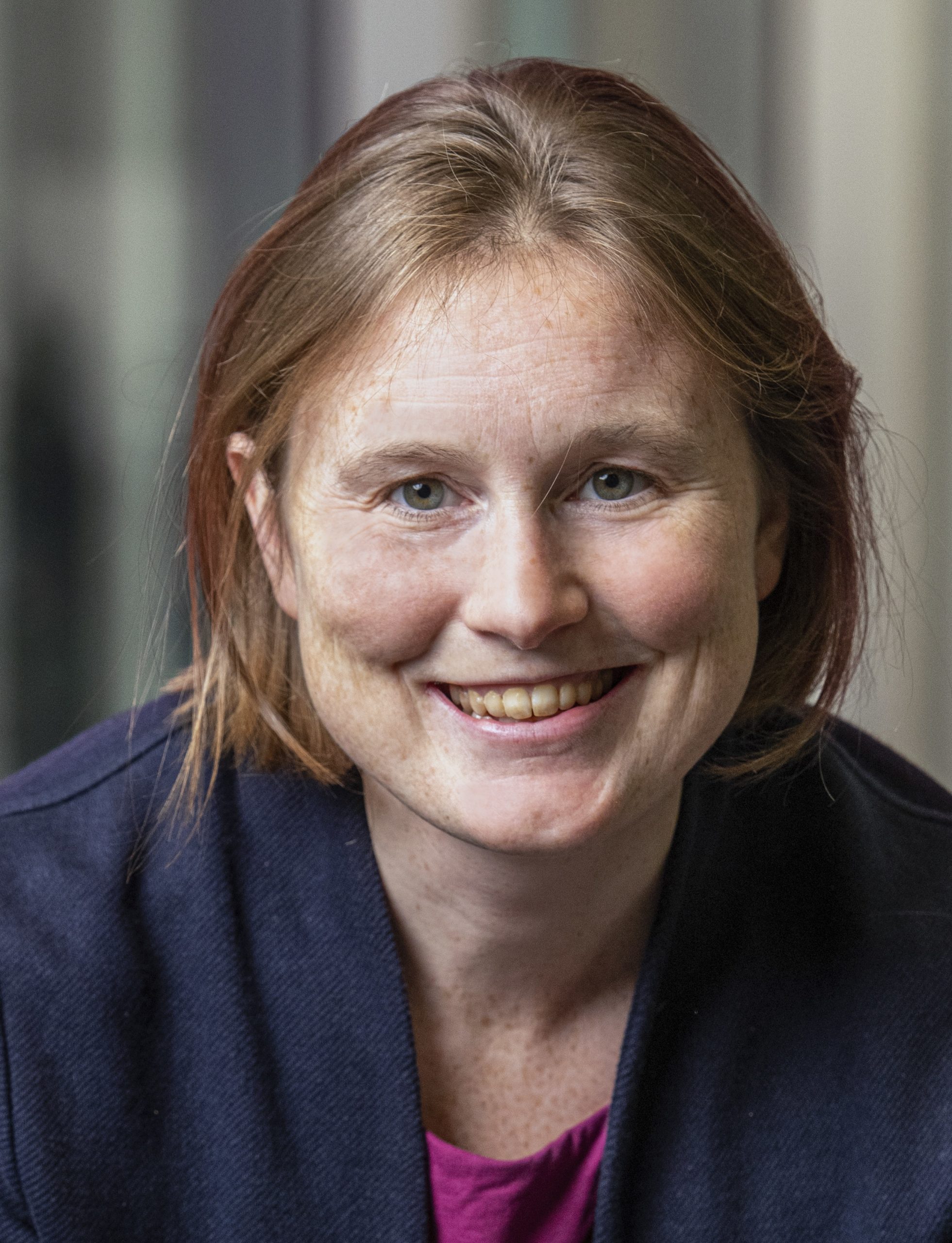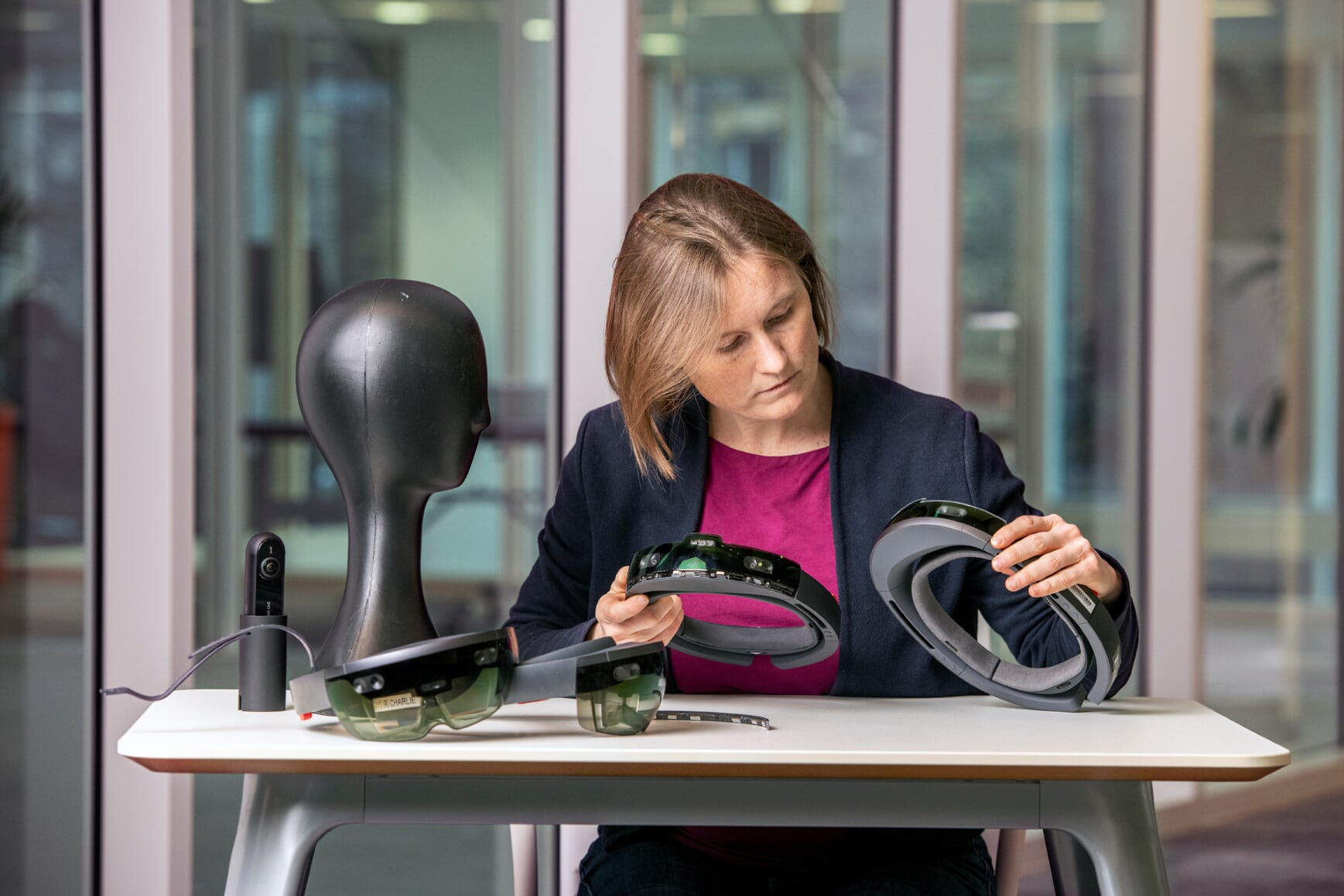Microsoft’s Cecily Morrison awarded MBE for services to inclusive design
 Cecily Morrison, a principal researcher at Microsoft’s Research Lab in Cambridge, has been awarded an MBE in the Queen’s Birthday Honours List.
Cecily Morrison, a principal researcher at Microsoft’s Research Lab in Cambridge, has been awarded an MBE in the Queen’s Birthday Honours List.
The 39-year-old, who is currently working on a project that uses technology to help people with low vision understand who’s around them, has been recognised for her work in inclusive design.
The UK News Centre sat down with Cecily to find out more about her work and the MBE.
Name: Cecily Morrison
Role: Principal Researcher
Age: 39
Lives: Cambridge, UK
Family: Partner and two sons
Pets: None
Hobbies: Music and dancing
Tell us about your current role?
I’m a researcher, so one of the exciting things I get to do is to imagine the future and the way that technology can enable and support that future. I’ve been working in Project Tokyo, which is trying to imagine what the world would look like if we had assistive agents [technology that can make decisions or perform tasks based on its environment]. We’ve been working on this from a human experience point of view (is it a good experience?) but also from a machine learning point of view (how do we develop the core technologies that are going to make this happen and make it happen in a way that makes users feel they are extending their own capabilities rather than feeling like technology is driving what they do).
Tell us about the MBE
The MBE is for services to inclusive design, which is where we think about how we can design technology for each and every one of us. That means that regardless of our abilities, we can use technology in ways that are appropriate for us.
I got a message on my phone from the Cabinet Office telling me to ring back and I thought it was a joke. I called them back and, of course, I realised it wasn’t a joke. I think the first thing that came to my mind was the incredible colleagues who have worked beside me to take some of the ideas that we’ve had and build those into technologies that have enabled people in the blind and low–vision community. The second thing I thought of was all the people who have supported my family and looked after my children so that I could have the privilege to go to such an amazing job.
What does it mean to you to be awarded an MBE?
What’s exciting for me is the recognition of how important inclusive design is for the world. It’s acknowledgement that inclusion is not a “nice to have”, it’s a “must have”. It’s something that makes it possible for everyone to give their talents to our society. As someone who has a blind child, I am reminded daily how inclusive design helps an awful lot of people participate in society and show their talents.
Why are you so passionate about accessibility?
Accessibility, and inclusion more generally, is how we help everybody contribute their talents to society. As technologists, we can make that a reality. When we think about inclusive design and disability more generally, we don’t see someone’s physical body or cognitive abilities as being different. It’s a mismatch between the abilities that they have and the way the environment they are in is set up. If we were all blind, our environment would look very different. As technologists, my team and I can make choices about how we minimise the discrepancy between the abilities a person might have and the ways technology works. We can choose to include or to exclude – once you see it that way, the choice is obvious.
What are some of your previous roles and jobs?
Interestingly, I didn’t study technology but I did do a lot of maths when I was young.
I realised that my real passion was for people and what we can do for them, so I ended up studying anthropology, which is about understanding how our social and cultural systems work.
I then went to Hungary on a scholarship to understand the way music structured a culture with a significant political past. I started to teach children in the local school coding and robotics. While I was there, I realised that it was the way technology is built that informs the ways that children interact with it. The design of technology is critical to the interactions of people. That took me on a path to study technology and think about how I could participate in the shaping of technologies that are being used in different societies and cultures.
I completed a PhD at the University of Cambridge. I then worked in a joint research project between the University of Cambridge and the NHS, looking at how the technologies we put in hospitals enable clinical teams to work together.
From there, I joined Microsoft, which employed people who were – and still are – thinking about the next generation of technologies that are going to enable clinical teams. Since then I had a son, who was born blind, and that was the start of yet another new journey for me. I think my work with computer vision and engagement with the blind community helped me understand some of the needs of that community and where technology could be used effectively.
Our first project in this space was Project Torino – a physical programming language for children aged seven to 11. It teaches kids coding and computational thinking, regardless of their level of vision. We started out by engaging young blind students in the community here in Cambridge and realised that if they were going to design technologies then they needed to learn to code. That made me think what I could offer. Project Torino was released last year under the name Code Jumper.
We were then invited by other researchers in the Cambridge lab to look at how we could add computer vision to agents such as voice-controlled AI. What would that look like? It quickly became very clear that many people with blindness and low vision were early adopters of this type of technology, and they were coming up with their own ideas. So, we started Project Tokyo, which looked at how to build and deploy assistive agents for people who are blind or have low vision.
What are your aims at Microsoft?
Microsoft is in a unique position to drive accessibility and inclusion. Firstly, it’s incredibly committed to accessibility and inclusion – from the very top of the company, all the way down to the teams that build the technology. As an enterprise company, I think Microsoft is in a unique position to explore the next wave of accessibility technology and to ensure it has a sustained and widespread impact across the world. As we move towards thinking about accessible workplaces and agents, I’d like to be a part of those teams that are going to make those products a reality.
What’s the hardest part of your job?
One thing that’s exciting but also incredibly difficult is that my team and I work with emerging technology, trying to figure out the experiences that might enable a positive future. That’s a very uncertain and difficult journey, as we try to make sure we make the right choices about what technologies do and how they might fit into our society. It’s challenging but very interesting.
What’s the best part of your job?
The colleagues that I have, and the opportunity we have to think about our future world – where is it going and how does technology fit.
What inspires you?
I’m inspired by how ordinary people achieve extraordinary things just by facing adversity in their everyday lives. I look at how they move forward every day, stepping up to their challenges. It makes me smile and think I can do that, too.
What was the first piece of technology that you remember being excited about?
I get really excited by what technology can enable, rather than the technology itself. So, for me, the first really enabling experience of technology was Skype. I used to live in a village in Hungary and Skype enabled me to see my family.


